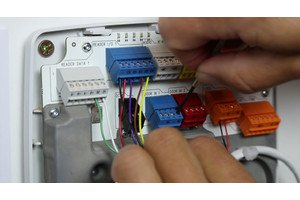
It used to be that stringing miles of cable was the only way to install a Physical Access Control System (PACS). That industry paradigm is starting to shift. New technologies with IP access control are bringing intelligence to the doors and making environments smarter, safer and more secure places to work and live. In his article, The Case for IP Access Control, Scott Dunn outlined a number of benefits to transitioning from analog to an IP-based PACS.
Among the strategies he suggested for embracing a fully network-based system was to move control to the edge. But what does an “edge” strategy mean in a PACS environment?
And what benefits does edge bring to the end-user?
In a PACS context, an edge solution means giving every door its own controller.
Within each of these controllers — i.e. the edge devices — is the intelligence to analyze access parameters and grant entry. Like all schema employing network-attached devices, IP-based controllers are part of a fully scalable solution that provides the integrator and customer with a fixed price per door whether adding one or dozens of doors to the system.
A Closed World vs. Open IP-Based PACS
Pushing PACS control to the edge solves a lot of installation headaches and expense. In my years of selling traditional PACS for a security integrator, a major part of risk assessment and designing access control systems included demonstrating to security and facility managers how the new technology would enable them to manage their facilities efficiently.

